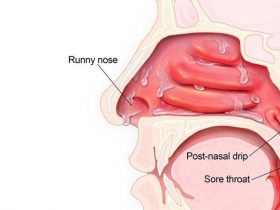Hay Fever is a common condition, similar to the flu or common cold, caused by an allergic reaction or sensitivity to substances in the air. It is also known as allergic rhinitis or nasal allergies. Hay fever symptoms usually affect the nose. Despite its name, an infection with hay fever doesn’t necessarily mean that a person is allergic to hay but rather it is as a result of airborne particles. Also, fever is hardly ever a symptom of hay fever.
Allergic rhinitis [1] develops when the immune system of the body perceives and overreacts to something or a natural substance in the environment (air) that normally causes no problems in most people. Allergic rhinitis can either be seasonal (occurring in certain seasons such as spring, summer, or fall), usually caused by substances in the air such as pollen from grasses, trees, weeds, or perennial (occurring all year round) which may be caused by dust particles, airborne mold spores or pet hair or fur. This article is centered around hay fever or allergic rhinitis and the common symptoms of allergic rhinitis.
Coughing

If the body of the person with the allergic reaction is to get rid of the natural allergens that entered the body (usually through air inhalation containing these allergic substances) certain defense mechanisms must be activated by the immune system. Coughing is one of them. Hay Fever may cause coughing and wheezing to force the invasive substances out of the nose.
Asthma [2] is also closely linked to allergic rhinitis and people suffering from both may experience other symptoms like chest tightening, shortness of breath alongside coughing and wheezing.













